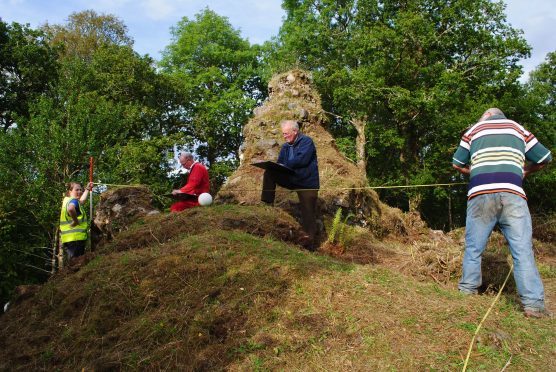The ruins of a medieval Highland castle are once again accessible and attractive thanks to the work of local volunteers.
The castle at Torcastle near Banavie, which is designated a scheduled monument, is set on a prominent knoll overlooking the River Lochy.
Until recently it had been hidden within an overgrown jungle.
But following approval from Historic Environment Scotland, Lochaber Archaeological Society undertook the necessary work to safeguard and make visible what remains of the medieval tower house.
Originally the property of the Clan Chattan, the castle came into the possession of the MacIntoshes in the late 13th century but was later occupied by the Camerons and probably remained the seat of the chiefs until the 17th Cameron built his residence at Achnacarry in the mid-1600s.
Following receipt of a Monument Management Grant provided by Historic Environment Scotland and under the guidance of AOC Archaeology, work was undertaken to clear the castle ruins of the vegetation that was impacting on the long-term survival of the site and masking the visibility of the monument.
Members of the society spent many days this autumn clearing extensive rhododendron and other small shrubs by the ruins, which are located at the end of a popular footpath at Torcastle. They can now be more easily located and accessed by casual visitors.
Nicola Hall, senior heritage management officer for Historic Environment Scotland, said: “I would like to congratulate the Lochaber Archaeology Society for a job well done.
“Working alongside AOC Archaeology and giving up much of their own free time, they were able to ensure that the dense and harmful vegetation surrounding the site was cleared, which has significantly increased access to the site, and enabled conservation work to be carried out.”
In-depth surveying of the monument was also carried out.
Robert Cairns of the Lochaber Archaeological Society said: “Our volunteers put an incredible amount of hard work into the care of this monument and we are proud of the results. We’ve already had a number of visitors coming up and saying how nice the site looks.
“We hope to use the newly gained survey skills on a number of other sites in the region.”
